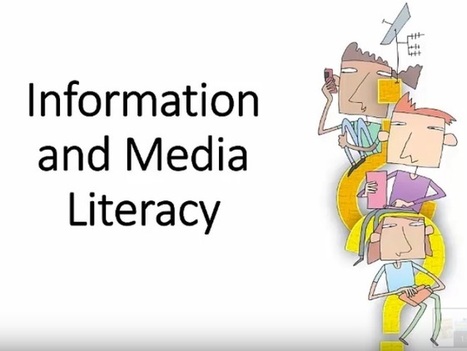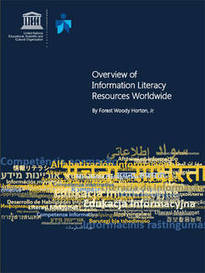Literacy skills help students gain knowledge through reading as well as using media and technology. These skills also help students create knowledge through writing as well as developing media and technology.
Information Literacy
Students need to be able to work effectively with information, using it at all levels of Bloom's Taxonomy (remembering, understanding, applying, analyzing, evaluating, and creating). Information literacy involves traditional skills such as reading, researching, and writing; but new ways to read and write have also introduced new skills:
- Consuming information: The current excess of information requires students to gain new skills in handling it. When most information came through official publications like books, newspapers, magazines, and television shows, students encountered data that had been prepared by professionals. Now, much information is prepared by amateurs. Some of that work is reliable, but much is not. Students must take on the role of the editor, checking and cross-checking information, watching for signs of bias, datedness, and errors. Students need to look at all information as the product of a communication situation, with a sender, subject, purpose, medium, receiver, and context.
- Producing information: In the past, students were mostly consumers of information. When they produced information, it was largely for a single reader—the teacher—and was produced for a grade. It was therefore not an authentic communication situation, and students felt that writing was a purely academic activity. Now writing is one of the main ways students communicate. It has real-world applications and consequences. Students need to understand that what they write can do great good or great harm in the real world, and that how they write determines how powerful their words are. Students need to take on the role of professional writers, learning to be effective and ethical producers of information.
Media Literacy
Media literacy involves understanding the many ways that information is produced and distributed. The forms of media have exploded in the last decade and new media arrive every day:
- See more at: https://k12.thoughtfullearning.com/FAQ/what-are-literacy-skills#sthash.Ck95Ibcv.dpuf
Learn more / En savoir plus / Mehr erfahren:
https://www.scoop.it/t/21st-century-learning-and-teaching/?&tag=Media+Literacy
Via Ana Cristina Pratas



 Your new post is loading...
Your new post is loading...











Literacy skills help students gain knowledge through reading as well as using media and technology. These skills also help students create knowledge through writing as well as developing media and technology.
Information Literacy
Students need to be able to work effectively with information, using it at all levels of Bloom's Taxonomy (remembering, understanding, applying, analyzing, evaluating, and creating). Information literacy involves traditional skills such as reading, researching, and writing; but new ways to read and write have also introduced new skills:
Media Literacy
Media literacy involves understanding the many ways that information is produced and distributed. The forms of media have exploded in the last decade and new media arrive every day:
- See more at: https://k12.thoughtfullearning.com/FAQ/what-are-literacy-skills#sthash.Ck95Ibcv.dpuf
Learn more / En savoir plus / Mehr erfahren:
https://www.scoop.it/t/21st-century-learning-and-teaching/?&tag=Media+Literacy